How 'From A Certain Point Of View' Will Make You Fall In Love With 'Star Wars' All Over Again
There's a lot of Star Wars content making the rounds these days, and if rumors of a live-action television series are true, we certainly won't be thirsting for stories set in that galaxy far, far away anytime soon. But one of the recent additions to the Star Wars universe has earned a special place in my heart: Del Rey's From a Certain Point of View, an anthology of 40 stories from 40 different authors, featuring an amalgam of secondary (and tertiary, and quaternary...) characters in A New Hope.The anthology spotlights everyone from Grand Moff Tarkin to the patrons of the Mos Eisley cantina to the mouse droid scurrying the hallways of the Death Star, offering vastly different perspectives on key events in the original Star Wars film. Though a 459-page book that covers an already intimately familiar subject matter may seem like a recursive snoozefest, From a Certain Point of View manages to delight in the details that make the Star Wars universe so beloved, delivering fresh insight into iconic characters like Obi-Wan Kenobi and Yoda while also highlighting the diversity that has for so long remained at the fringes of official Star Wars lore – and even humanizing stormtroopers in the process.
In addition, this enchanting collection of tales revels in a post-ironic, playful brand of humor that is so critical in these casually absurd times. Even as those who breathe life into Star Wars treat the universe with the utmost respect, the franchise has also learned to laugh at itself, which leads to, say, a chapter about the monster in the trash compactor now becoming a part of the official Star Wars canon. (Her name is Omi, by the way, and lest you doubt her inner fire, she has a warrior spirit.) It's these small but important nuggets that remind me why I fell in love with Star Wars in the first place.
(Psst: For those who grumble about money-making machines, all proceeds from Point of View are going to a non-profit charity organization called First Book, which just makes me love this book even more.)Below are some of the highlights, but beware: slight spoilers await.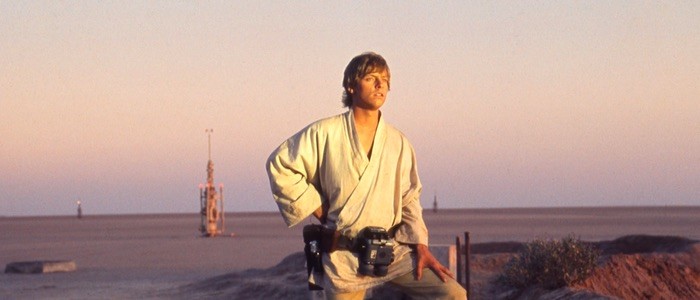
A meta Star Wars is a better Star Wars
Ken Liu's story, "The Sith of Datawork," immediately became my unexpected favorite chapter in this anthology. The titular Sith of Datawork is Arvira, an Imperial logistics liaison responsible for helping troopers and officers fill out endless piles of paperwork. He's good at his job – so good, in fact, that he has become an expert at cheating the system he allegedly serves. Which is why gunnery captain Bolvan enlists his help to cover up the decision not to fire on the ejected space pod from Princess Leia's ship, the Tantive IV – and Arvira accomplishes this by, of course, burying Bolvan's blunder under piles of paperwork.The story concept and Arvira's cheeky inner monologue lamenting the stormtroopers' targeting skills point to two Death Star-sized flaws in the Star Wars narrative, but instead of downplaying them or dismissing them altogether, the franchise embraces the silliness with a slight nod and a mega wink. Details like these are often highlighted when Haters™ attempt to put down the validity of Star Wars, but these are also the details that fans have affectionately parodied for decades, making this chapter feel like an endearing echo of the famous Robot Chicken Star Wars special. (Indeed, it seems like Liu himself approves of this connection.) This is the kind of self-aware humor that makes Star Wars so fun and keeps the franchise relevant, blurring the line between the fans and the creators by inviting us all to laugh together.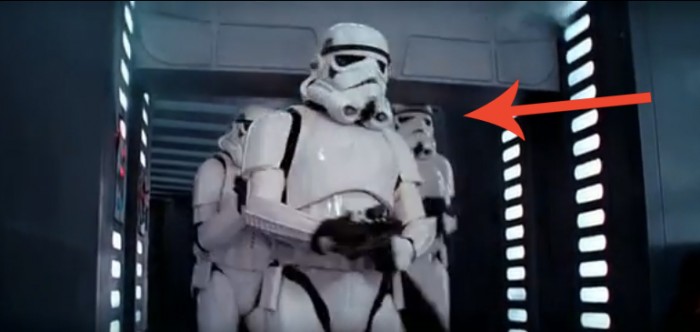
#NotAllStormtroopers
Stormtroopers were never really meant to be people – they were designed as identical-looking, colorless, faceless enemy soldiers for a reason. But From a Certain Point of View includes several chapters on some of the more infamous bucketheads, giving them backstories and personalities of their own. In continuation of the above theme, these chapters mostly engage in self-referential humor.In "Sith of Datawork," Arvira talks about acquiring entertainment holos on a Star Destroyer even though "all shipboard bandwidth was supposed to be reserved for combat-related transmissions" (Stormtroopers – they sneak ways to binge Netflix at work, just like us!). "Bump," by writing duo Ben Acker and Ben Blacker, takes us inside the head of the poor stormtrooper known for banging his noggin while walking into the control room in A New Hope. TD-110 was, in fact, distracted, thinking about a certain Force-suggestion incident with a mysterious old man outside of the Mos Eisley cantina. (What, you thought it was actually just a blooper?) Like Ken Liu, Daniel José Older pokes fun at the Empire's bureaucracy with "Born in the Storm," formatted like an Official Imperial Incident Report Form, in which a rogue stormtrooper expresses his dissatisfaction with the Imperial military and rides off into the desert in a hilariously enraged blaze of glory.But there's room for some more serious-minded humanization as well, as in Christie Golden's "The Bucket." Golden gives TK-4601, the main stormtrooper responsible for capturing Leia on the Tantive IV, a name (Tarvyn Lareka), a physical description, and a character arc as compelling as any main player in the saga. Jolted by an awareness of Leia Organa's enormous reservoir of emotional strength and fortitude, Tarvyn begins to reconsider his role in this Galactic War. In a similar vein to the haunting Black Mirror episode "Men Against Fire," "The Bucket" plumbs the depths of one of the darkest questions humanity has to account for: what makes one person able to look into another's eyes and kill them? With Tarvyn's struggle, we begin to understand that there are people under those helmets after all.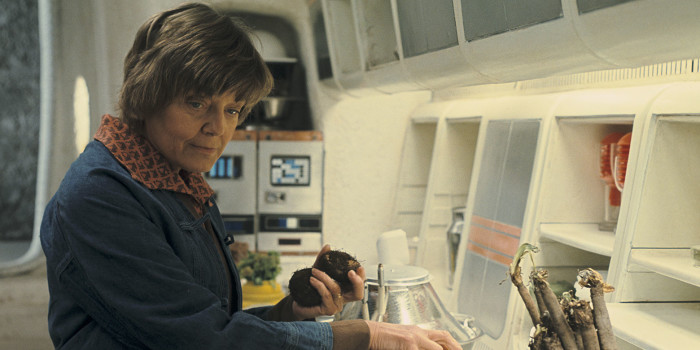
Diversity in Storytelling
Like a microcosm of the Star Wars galaxy, From a Certain Point of View contains a most impressive array of diverse writers and storytellers: Nnedi Okorafor is a writer of Nigerian descent, Zoraida Córdova hails from Ecuador, and Sabaa Tahir is Pakistani-American. (And all three of them are women.) In recent years, Lucasfilm has broken new ground in promoting different skin colors, ethnicities, and genders on the big and small screen, and this celebration of representation continues in From a Certain Point of View.She's given only 18 seconds of dialogue in A New Hope, but Aunt Beru finally gets to tell her tale in Meg Cabot's chapter, "Beru Whitesun Lars." Mon Mothma, de facto leader of the entire Rebel Alliance, only gets 40 seconds in Return of the Jedi, but since then, she has become a constant presence on both animated series, The Clone Wars and Star Wars Rebels, as well as in novels like Claudia Gray's Bloodline and Chuck Wendig's Aftermath trilogy. In From a Certain Point of View, Alexander Freed's chapter, "Contingency Plan," provides an especially chilling and multi-layered portrait of the Alliance leader.There hasn't been a ton of LGBTQ representation in Star Wars yet, but we've been inching ever closer: Fan favorite anti-hero Doctor Aphra (who may or may not be...not straight?) gets a chapter of her own in From a Certain Point of View. The aforementioned Wendig, who has long been at the forefront of promoting non-straight/non-cisgendered characters in his fiction, introduced the first out gay main character in the Star Wars universe in Aftermath. The throwaway line in his Point of View chapter "We Don't Serve Their Kind Here" about "a tough old broad named Ackmena, who lived out on the Delkin Ridge with her wife, Sorschi" is an important step in normalizing non-heteronormative people on the page and on the screen. (In the process, Wendig manages to canonize a memorable character from the oft-maligned Star Wars Holiday Special, too.)From a Certain Point of View also includes a story by Glen Weldon, a pop culture genius and an out gay man. The chapter, "Of MSE-6 and Men," is cleverly constructed through the rudimentary consciousness of MSE-6, the mouse droid glimpsed for just a couple of seconds in the hallway of the Death Star. Though he starts out as just a meager messenger droid, MSE-6 soon gets caught between a stuffy officer and a sassy stormtrooper in the Death Star-crossed love story we always needed. As Weldon gleefully proves: there are, in fact, #gaysinspace.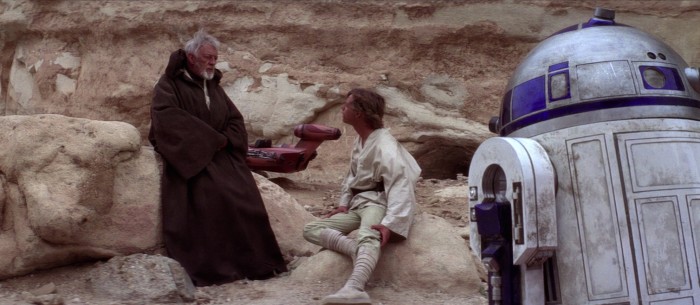
The Redemption of Obi-Wan Kenobi
From a Certain Point of View borrows its title from the infamous Force Ghost Obi-Wan Kenobi line in Return of the Jedi, so it's only fitting that Obi-Wan himself features prominently in several of these stories. The quote itself ("what I told you was true... from a certain point of view") is a point of contention in the Star Wars fandom, either an indication that old Ben Kenobi was a self-serving liar or a traumatized war veteran. Similarly, the prequels paint him as either a paradigm of Jedi hubris or a tragic hero born from loss, and The Clone Wars presents him as both a cold-hearted automaton and a bleeding heart romantic. So, naturally, your opinion of one Obi-Wan Kenobi depends on your point of view.In From a Certain Point of View, "Master and Apprentice," by fan favorite Star Wars author Claudia Gray, and "Time of Death," by Cavan Scott, both do a terrific job of merging these contradictions, imbuing Obi-Wan's character with additional nuance and depth by fleshing out a complicated figure wracked by guilt. In "Master and Apprentice," Obi-Wan shares a moment with Force Ghost Qui-Gon after Luke runs off to check on his aunt and uncle (R.I.P. Aunt Beru and Uncle Owen), and we are treated to Qui-Gon's poignant musings on the pain and beauty of Obi-Wan's life. Obi-Wan expresses his anxieties – including a Tenth Doctor-like reluctance to let go of his life – and Qui-Gon attempts to soothe them. Their conversation is teeming with regret and heartache, but it also shows how Obi-Wan has grown over his years in the desert, and it shines a light on who he really was all along. In a scene reminiscent of the gorgeous "Twin Suns" episode of Star Wars Rebels, Qui-Gon marvels at Obi-Wan's quiet, personal triumph in the midst of the darkest darkness:
"Every person Obi-Wan ever truly loved – Anakin, Satine, Padmé, and Qui-Gon himself – came to a terrible end. Three of them died before his eyes; the other fell to a fate so bleak that death would've been a gift. The Jedi Order that provided the entire framework for Obi-Wan's life was consumed by betrayal and slaughter. Every step of this long, unfulfilling journey is one Obi-Wan had to take alone... and yet he never faltered. As the rest of the galaxy burned, his path remained true. It is the kind of victory that most people never recognize and yet the bedrock all goodness is built upon."
Cavan Scott's "Time of Death" tackles one of the most memorable moments in the Star Wars saga: Obi-Wan Kenobi's death. In this chapter, Obi-Wan is the one musing on a past scarred by tragedy, as the Force transports him to different events from his lifetime at the split second of his death. Scott tackles some of the odder elements of this scene, details that have not aged well through seven additional movies and two television series, and seamlessly weaves them into the narrative – why Obi-Wan calls Vader "Darth," why their battle is so anti-climactic, and finally, the gut-wrenching reason why Obi-Wan allows himself to be killed. Obi-Wan Kenobi movie, here I come!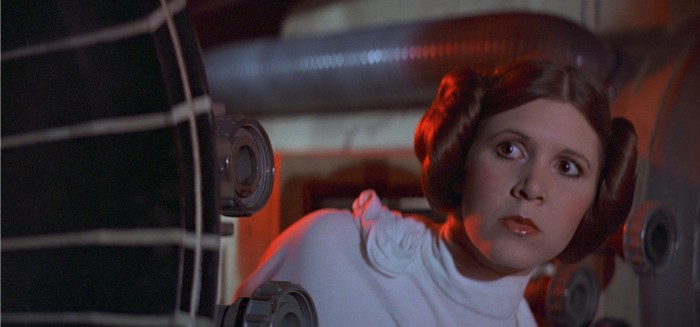
To me, she’s royalty: Endless Love for Leia Organa
The importance of Princess Leia to the Star Wars universe and the entire genre of science fiction can never be overstated, and since Carrie Fisher's passing, every mention of the famed heroine takes on additional resonance. Though Leia doesn't get a chapter of her own, she is admired from afar and up close by many of the colorful characters in From a Certain Point of View; though Luke is ostensibly the titular hero in A New Hope, it is Leia who publicly powers forward as an unshakeable symbol of hope."By Whatever Sun," co-written by E. K. Johnston and Ashley Eckstein (the voice of Ahsoka Tano), follows a character from Johnston's Ahsoka novel as she stands among the hundreds of Rebels on Yavin IV during the medal ceremony at the end of the film. Miara Larte worked closely with Ahsoka before each took up the cause of the Rebellion. Now, Miara observes Leia Organa in a moment of celebration that seemingly obscures the unconscionable tragedy that preceded it – the destruction of Alderaan. Miara describes the way the princess exudes both of her adoptive parents' admirable qualities in a paragraph that warms my Organa-loving heart. (In "Master and Apprentice," Obi-Wan comments on how much like Padmé she is, too.) Leia is admired by the enemy as well, specifically in the aforementioned chapter "The Bucket," where stormtrooper TK-4601 is struck by how "little" Leia is – and yet he recognizes her as "more of a woman than most twice her age."I am here for all of the Leia Organa idolization. But one of the most exciting Leia tidbits in From a Certain Point of View comes from Gary D. Schmidt's "There is Another." The chapter portrays Yoda in a surprisingly sympathetic light, certainly much different from the wacky old troll we come to know in Empire Strikes Back. Naturally, the title is a reference to Yoda's last words in Return of the Jedi, when Yoda hints to Luke that he has a twin sister. Yet we see that Yoda had been thinking about Leia before the moment of his death – quite a lot, actually, since it is revealed in a brilliant twist that Yoda had planned on training Leia, not Luke, in the ways of the Force. Too bad Obi-Wan's Force ghost got to Luke first, or we would have had a very different Star Wars saga. Save it for the inevitable reboot, right?
